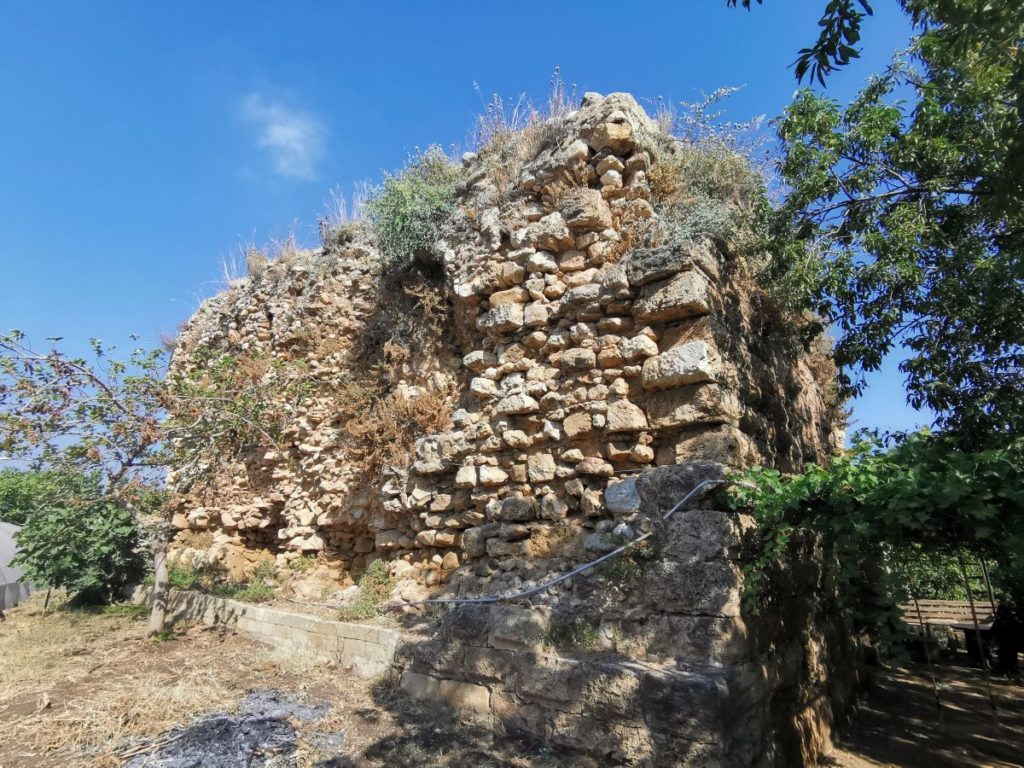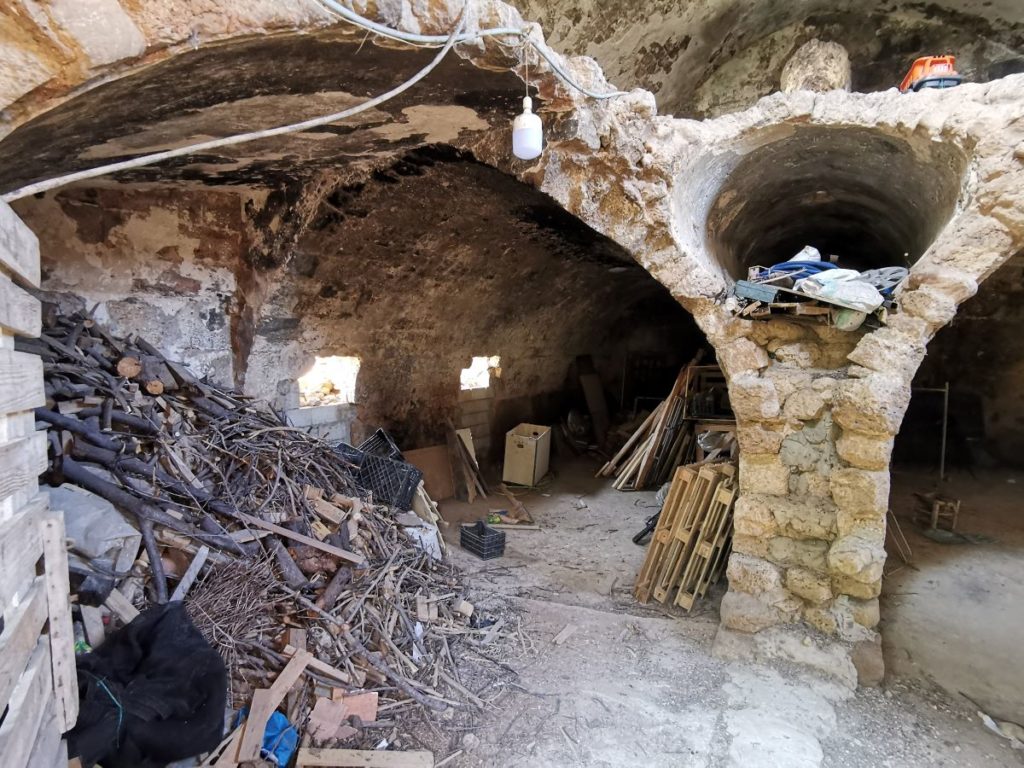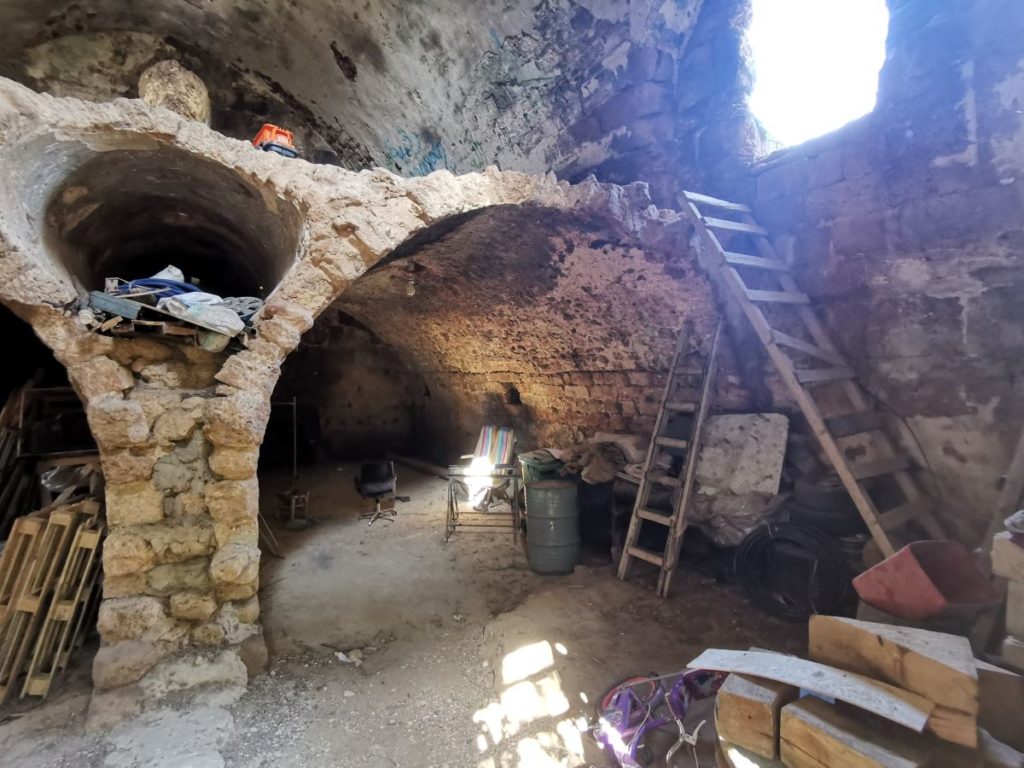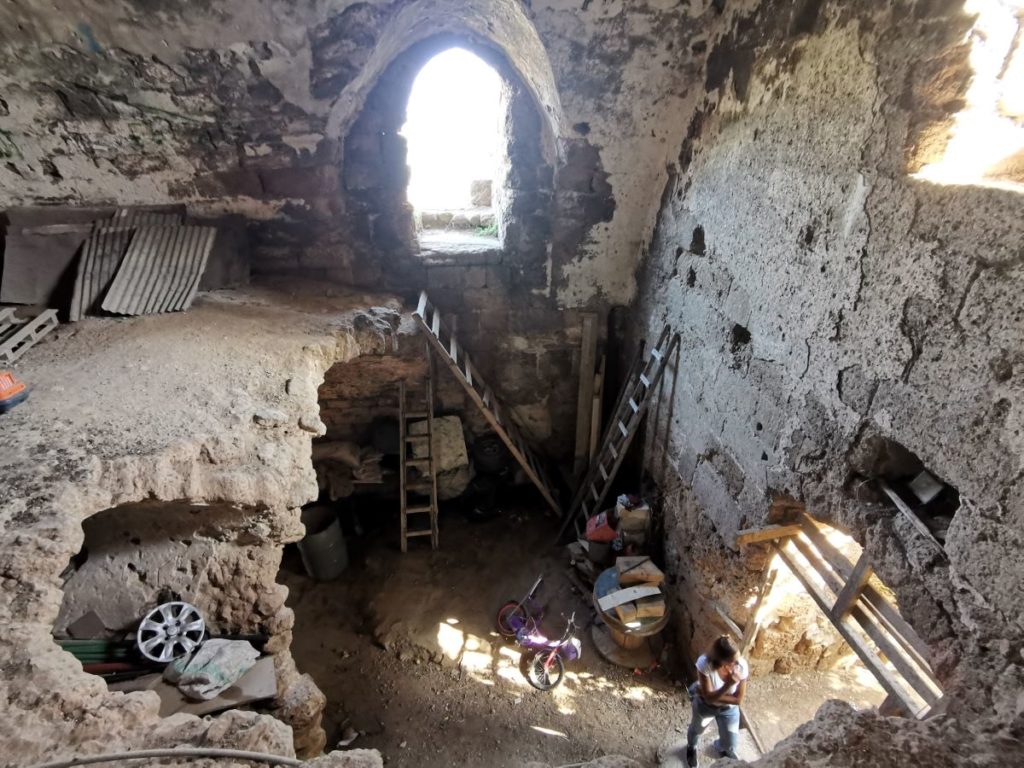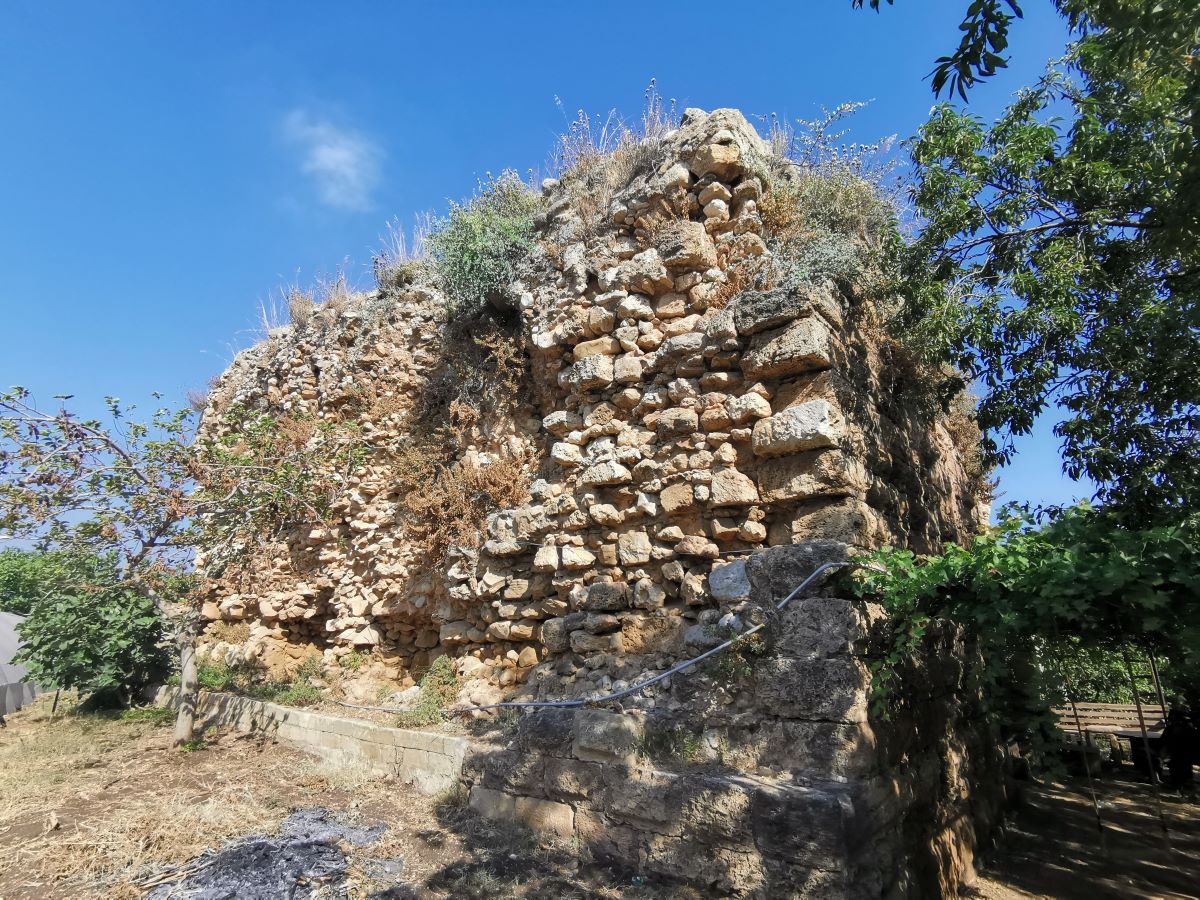Bahani town houses a defensive tower that dates back to the crusader period.
It is located on a private property and the visits are welcomed by the habitants.
Toponym
Bahani is a frankish designation given to a town during the Crusader period. It is commonly known today as Bahnine.
Historical Background
Bahani appeared on the map around the year 1127 as part of a large casal donated to Saint-Jean du Mont-Pélerin Hospital by Count Pons of Tripoli. This casal typically embodied the image of a rural Frankish colony, endowed with both an administrative and military symbol.
As a town at the center of a rural casal, Bahani saw the construction of a tower that reflected an authoritarian representation of the Frankish feudal power. This function can be concluded by the structural elements of the building where aesthetics works are pre-dominant.
Structure
Measuring about 6 meters high and cubic-shaped, the tower walls feature two wide and high openings, and are dressed in particularly neat chamfered bosses, especially the north wall that also bears an abundance of lapidary marks.
The tower is built around a single, slightly broken barrel vault, particularly high and whose inscribed volume was divided in two by a framed floor. A door on the ground floor leads to a cellar, which is unusual and could well indicate a strong desire to make this level as functional as possible, in particular to store food of all kinds.
The highest level is served by a staircase formed in the thickness of the wall, the entry point of which is at the level of the first floor. At this height, the exterior facings were torn off as well as part of the core of the wall. As a result, the staircase is now open to the sky and from the outside of the tower one can follow for a few meters the edge of the vault that once formed the conduit.
The tower had several remodeling since its inception and serves today as a storage space for the nearby habitants.
Karim Sokhn
Tour Operator & Tour Guide
References:
http://www.orient-latin.com/fortresses/140
Les Chateaux des Croisds en Terre Sainte III, Institut Francais D’archeologie de Beyrouth, Paul DESCHAMPS
